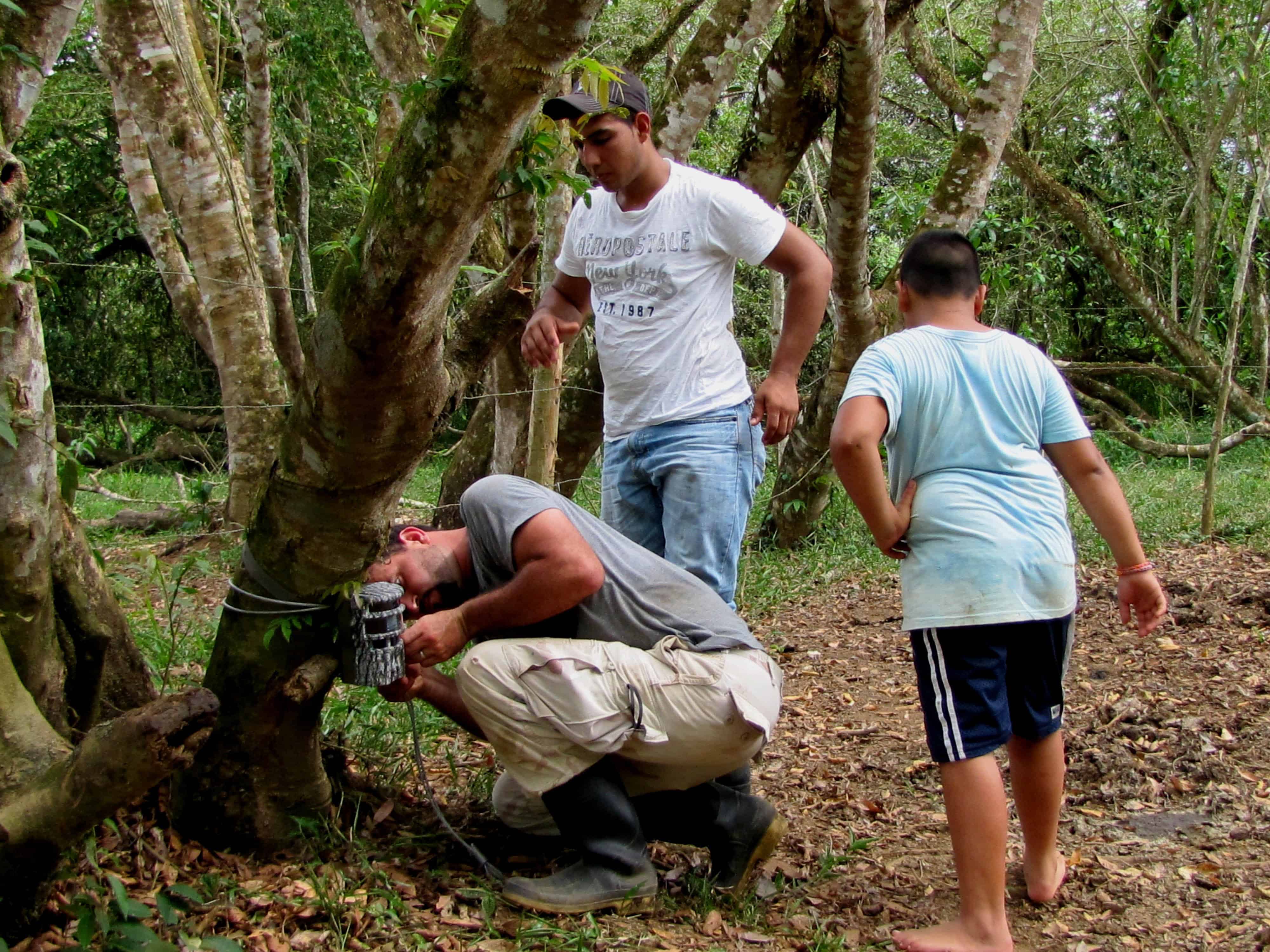I’m not afraid to admit that I’m usually not the most important guy in my own camera trap projects. Sure, I have a decent amount of field experience at this point, and I own a closet-full of camera traps so I’m necessary, but the real straw that stirs the drink so to speak, are my camera trap field assistants.
In your mind, picture the person that is a ‘camera trap project field assistant’ helping to video-document the species that make up the biodiversity of a diverse array of tropical landscapes. Is that person wearing a safari hat and a khaki vest? Are they holding a clipboard or some other ecological measuring device? Are they attempting to do their PhD research that will ultimately be published in a scientific journal with a title that contains at least three words that non-ecologists would need to look up?
I’m sure people like that are rocking the world of wildlife research in forests all over the planet, but they’re not who I’ve been leaning on to teach me all about Costa Rica’s natural environment. My guys (usually they’re guys) are more of the machete-wielding, horse-riding, cow-owning variety.
The most important person in all of my camera trap projects is the person that spends the most time on the property. Most of the time, it’s a hardworking farm dude that knows a lot about the local trees and wildlife and is more than happy to spend the day in the forest (instead of doing some other physically demanding labor) and help the ‘muchacho de las cámaras.’
Over the last few years as my projects have come and gone, I’ve had the opportunity to meet a lot of smart, friendly and hardworking people that share their knowledge of their property with me and help me to successfully record the wildlife videos that I so proudly blast out into the world. Let me introduce you two of Guanacaste Wildlife Monitoring’s past field assistants.
Meet Don Gabriel
Don Gabriel is small and serious. He’s at least seventy-something. I meet him at a Soda that hangs over the edge of a big muddy river. He pulls up in a little wooden boat with a loud gas motor, I hop in and we cruise up river to his house. A collection of family is always at the house, and I throw coconuts across the yard with a dog for a while before we hop onto the horses and head out to check the cameras.
Don Gabriel takes the next 5 hours to show me all the best corners of his farm, and we record an incredible amount of wildlife during the project. With the boats, horses and everything else, every visit with Don Gabriel lasts about 7 hours and if you divided the number of words that we say to each other during each visit, it would come out to about 11 words per hour. It turns out, that we’re both the kind of guy that can cruise through the forest for hours without having to say much and still have a perfectly wonderful time.
Next up, Donald
Donald is a happy forty-something farmhand. He and I rode all around the farm where he works in Guanacaste on horseback. He had actually used camera traps before and was pumped to participate in the project. He showed me places where they had recorded some interesting photos a few years earlier and during the project we recorded a lot of jaguar activity. The thing that stands out to me about Donald was how he traveled to and from the farm.
To get to the nearest store or to travel home to visit his family every two weeks or so, he’d have to cross the Tempisque River. The problem is there’s no bridge. So Donald would swim across to the bus stop. Sometimes he’d go on horseback, when he’d hide is horse on the other side, do his shopping and swim back.
But when the trip was too long for horse-hiding, he did the swimming himself. Can you imagine that bus ride? A little old lady going to the clinic, a mom taking her kid to the store, then Donald, still damp from swimming across a crocodile-infested river.
Don Gabriel and Donald are very different people living on farms at almost opposite ends of the country, but both treated me in a style that I’ve come to find out is normal in Costa Rica. They treated me like a friend. And, bonus for me, they helped me to get amazing wildlife videos.
About the Author
Vincent Losasso, founder of Guanacaste Wildlife Monitoring, is a biologist who works with camera traps throughout Costa Rica. You can contact him at: vincent@guanacastewildlifemonitoring.com






